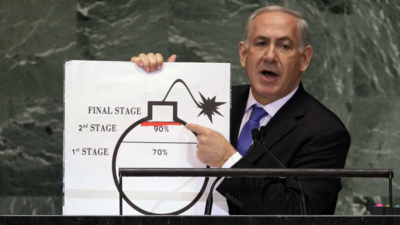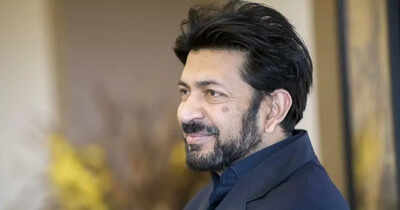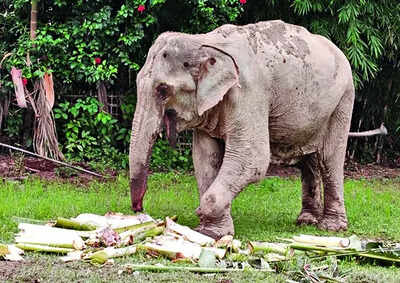Fortified and hidden: Why Iran’s Fordow nuclear site is critical; how could Israel try to take it out?

As tensions between Iran and Israel escalate, a chilling question arises: Could this spiral into a nuclear crisis? In the past five days, the situation has worsened, with Israel reportedly targeting nuclear sites in Tehran. Experts warn that any further escalation could be catastrophic. At the heart of these rising tensions lies Iran’s most secretive and fortified nuclear facility, Fordow. Why is Fordow critical? Tucked deep beneath a mountain near Qom, the Fordow Fuel Enrichment Plant is one of Iran’s most secretive and heavily fortified nuclear sites. Its underground design—80 to 90 meters below the surface—makes it virtually impenetrable to aerial strikes, even with the most advanced bunker-buster bombs in Israel’s arsenal. Originally exposed in 2009 through Western intelligence, Fordow was built in secrecy and designed for survivability, especially in the face of potential military attacks on Iran’s nuclear infrastructure.What makes Fordow particularly alarming to global powers is its capacity to enrich uranium to levels close to weapons-grade. According to the IAEA, the site now houses 2,700 centrifuges and has been enriching uranium to 60%—a short technical step away from the 90% needed for nuclear weapons.Fordow’s nuclear threatAccording to the International Atomic Energy Agency (IAEA), uranium enriched to 83.7% purity was found at the site in 2023, dangerously close to the 90% enrichment level needed for nuclear weapons.Experts warn that Iran could produce enough material for multiple bombs in just weeks if it chooses to weaponize its stockpile. Fordow’s strategic importance lies not only in its enrichment capabilities but in its symbolic and operational role as a hardened fallback facility, raising the stakes of any military or diplomatic attempt to curb Iran’s nuclear ambitions.Despite repeated Israeli attempts to neutralize it, Fordow remains intact. Only the US possesses the kind of ordnance—like the GBU-57 bunker-buster—that might reach its buried core, and even that would likely require multiple strikes. For Iran, Fordow is a nuclear insurance policy. For the world, it is a red line—and possibly a countdown.“The Iranians fully understood that the Israelis would try to get inside their programs, and they built Fordo inside of a mountain a long time ago to take care of the post-Iraq problem,” said Vali Nasr, an Iran expert who is a professor at Johns Hopkins University.
The one bomb that could break through
Only one known weapon could potentially take out Fordow: the US-made 30,000-pound bomb. This bomb, also called “bunker buster,” is capable of burrowing through rock and steel before detonating.
Key features:
- Length: 20 feet
- Weight: 30,000 pounds
- Carrier: Only the American B-2 stealth bomber can carry it
- Purpose: Destroy deep, fortified bunkers like Fordow
But there’s a catch: Israel doesn’t have it. The United States has consistently denied Israeli requests for the bomb, citing fears that its use could provoke a full-scale regional war.“We’ve had a policy for a long time of not providing those to the Israelis because we didn’t want them to use them,” said general Joseph Votel, former head of US central command.
What can Israel do instead?
While Israel lacks the bunker buster or a heavy bomber to deliver it, it hasn’t given up on options:
- Targeting power infrastructure: One feasible strategy is to destroy power generation and transmission systems around Fordow, temporarily disabling operations.
- Sealing entrances: Strikes on the access points of the underground complex could trap equipment and personnel, rendering parts of the facility unusable.
- Special forces insertion: A bold but dangerous option involves Israeli commandos infiltrating the facility, planting explosives, and sabotaging it from within. Israel reportedly floated such plans to the Obama administration years ago.
- Air supremacy tactics: With Israel having temporarily gained air dominance over large swathes of Iran, it could loiter over Fordow and disrupt activities, although this wouldn’t eliminate the facility.
“The Israelis have sprung a lot of clandestine operations lately,” said general Kenneth McKenzie Jr, former commander of US central command. “But the physics of the problem remain the same.”
Would the US step in?
While the US has moved aircraft and refuelling tankers into the region, there’s no indication yet that US President Donald Trump is prepared to shift long-standing US policy and provide Israel with the bomb. Officials warn that deploying it would involve complex coordination and risk significant collateral and geopolitical fallout.“If we use the bunker buster, there could be nuclear contamination,” general Votel said. “I think there would also certainly be fallout internationally over the idea that the United States joined Israel in what would be viewed as an illegal attack on the sovereignty of Iran,” he added.
Why the stakes are so high
Fordow is not just a physical challenge—it is a political one. An Israeli strike on the site, especially with US involvement, could trigger Iranian retaliation against American assets across the Middle East and plunge the region into another war.Iran insists its nuclear program is peaceful and remains a signatory to the Nuclear Non-Proliferation Treaty (NPT). But with enrichment levels rising and regional threats mounting, international anxiety over Fordow continues to grow.Fordow symbolises the nuclear stalemate between Iran and its adversaries. For Israel, it represents the limits of its conventional reach. For the US, it is a geopolitical tripwire. And for Iran, it remains a testament to strategic foresight in the face of existential threats. As the Middle East teeters on the edge of a broader conflict, what happens—or does n’t—at Fordow could shape the course of history.





